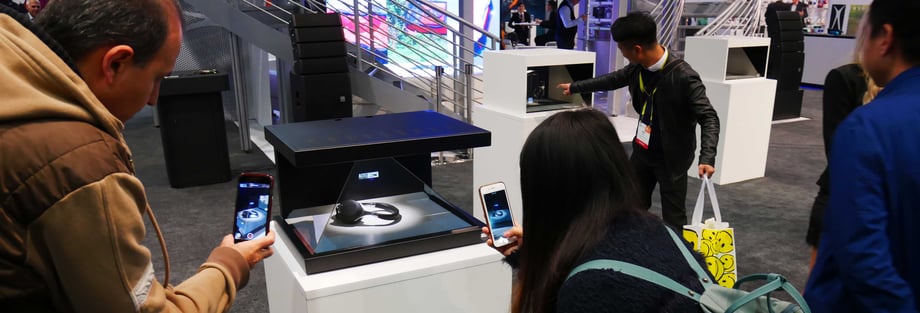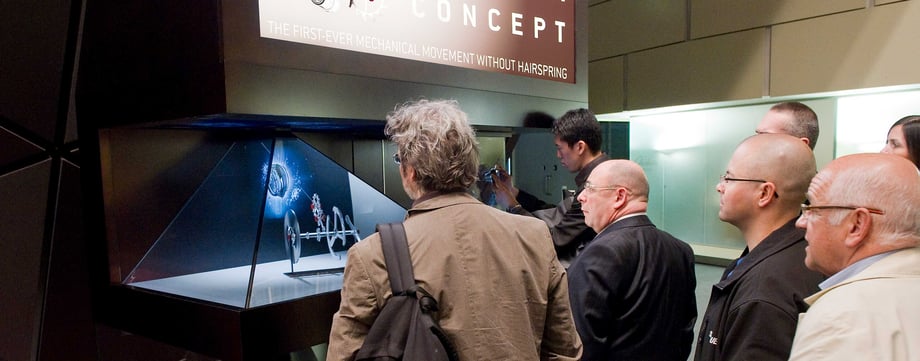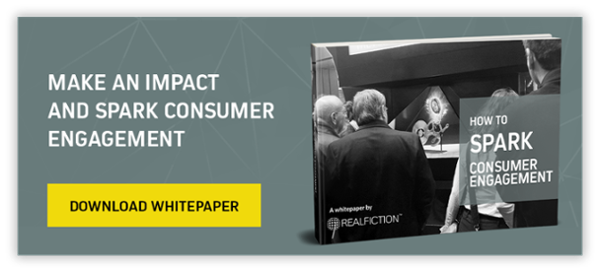Consumer engagement is a vital part of modern advertising, but every marketer knows that achieving it is far from easy. Modern day consumers navigate an everyday life of many commercials and advertisers fighting for their attention, and they get increasingly better at weeding out whatever they do not need or find interesting.
Technology is evolving faster and faster, and much advertising follows suit by making good use of new technology. This means that your audience faces an onslaught of marketing messages from various media every day, which in turn results in the straight old-fashioned cardboard cut-out or wobblers on shelf displays simply no longer being good enough.
A change in attitude
Customers in retail settings or at trade events know all the basic methods of advertisers angling for attention, and they have learned to ignore the ads that are not relevant to their needs. As tech evolves and advertising follows, consumers change and modify the way they will dole out attention to any message.
This means that as a marketer, you must figure out new ways of reaching an audience in the habit of ignoring you, but fortunately the technological evolution gives you various tools to do just that. Years ago, a cut-out of someone endorsing a product might increase sales numbers of a given product, simply because a figure in retail was new and surprising and would make people react.
But everyone has long since grown accustomed to endorsements from the cardboard version of a real person, and then came the TV-screens with videos showing all the excellences of a product, but moving pictures and sound from a device in a store is no longer quite enough to prompt a reaction from the picky consumers, as everyone is doing it and the effect diminishes with the sheer volume of advertising.

Choosing a platform
Knowing your choices of displays and media is imperative to a successful marketing campaign. Presumably, you already have loads of information about your customers, like what they need, how they act, what is likely to spark an interest in them. Using this knowledge, you will be able to create advertising in a form that will reach them.
One of the best ways to make someone react is by telling them a story. People like stories, and because storytelling is an inherent part of being human, we react to stories wanting to learn more. But a good story of your brand or products is not enough, you will still need to choose the right platform to tell your story. Sometimes videos on Facebook will be the answer, sometimes billboards may be the right solutions, and sometimes you might want to go with a holographic display.

Three dimensions of impression
Holographic displays have the advantage of still being the new kid on the block; nobody is used to seeing them in advertising yet, and the effect of surprise goes a long way. All the more, the impact of the graciously flowing three-dimensional graphics inside the display is quite stunning and will make audiences look twice or maybe even stand still, bend over, and try to figure out what is going on.
This means that customers are likely to linger at your display granting you time to tell a story and thereby make an emotional impact as they absorb your story. Placing a physical item inside the display and combining it with the surrounding holographic content makes for an even bigger impression, as it triggers curiosity as audiences’ brains are tickled by the visual tricks of real and unreal in the display making the holographic display a powerful player in the market of attention grabbing advertising.
Read more about consumer engagement in our whitepaper.
